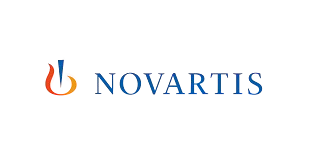India: Key Features & Benefits of PRINCE2 Agile Practitioner V2® Course
Why India Learners Choose ScholarAcad’s PRINCE2 Agile Practitioner V2 Exam Prep
1. Module: Explain the differences between projects and BAU (Business as usual)
Describe agile and its common approaches, how and why agile approaches have developed, and where they are used
Describe the history of agile, its contrast to the waterfall way of working, and how the Agile Manifesto fits in
Describe the different levels of agile maturity and well-known agile frameworks
Describe behaviors, concepts, and techniques that characterize agile
Define the PRINCE2 Agile view of 'agile
Describe Kanban, the Kanban method, and its six general practices, including the use of Cumulative Flow Diagrams (CFDs)
Describe the core concepts of Lean Start-up
Describe the use of workshops
Describe how to transition to agile
Define Scrum theory and explain the nature of the Scrum team, Scrum events, Scrum artifacts, and Sprints
2. Module: Describe the Complementary Strengths of PRINCE2 and the Agile Way of Working
Define who can benefit from using PRINCE2 Agile and in what contexts/situations
Define the makeup of PRINCE2 Agile (frameworks, behaviors, concepts, techniques, focus areas
Explain the eight' guidance points' Explain how PRINCE2 controls and governance can enable agile to be used in many environments
Describe what a typical PRINCE2' project journey' looks like in an agile context
3. Module: Explain the Purpose and Use of the Agilometer Throughout a Project
Describe the six sliders used on the Agilometer, explain their significance, and how to improve them
Describe in detail requirements terminology, decomposition, and prioritization, including Moscow and Ordering
Explain how requirements prioritization is used
Explain the rich communication focus area, its importance, and its key techniques
Explain how to manage frequent releases and the benefits of 'failing fast'
4. Module: Describe How to Use the 'Hexagon' about the Six Aspects of Project Performance
Explain the use of tolerances in terms of what to 'fix' and what to 'flex' about the six aspects of project performance
Describe in detail each of the five targets that underpin the use of the hexagon
Explain why the 'fix and flex' approach is good for the customer
5. Module: Describe in Detail the Five PRINCE2 Agile Behaviors (Transparency, Collaboration, Rich Communication, Self-Organization, Exploration)
Explain that agile needs to be incorporated in all seven PRINCE2 processes and all seven themes but that the amount appropriate to each will vary depending on the project context
Describe the two common organization roles of Scrum master and Product owner
Explain how to adjust roles, including the use of specialist roles and the options for team organization in a project
Define the makeup of a typical delivery team
Describe servant leadership, its use, and importance
Describe how to define working agreements
Describe quality setting techniques, including 'definition of done' and the use of acceptance criteria
Describe quality testing, quality checking, and management techniques
Describe approaches to planning and typical planning techniques
Describe approaches to risk and how agile concepts mitigate many typical risks
Describe how blending PRINCE2 with agile approaches controls, responds to, and minimizes the impact of change, including risk management and configuration management
Describe how empowered self-organizing teams handle change dynamically within set tolerances
Describe common feedback loops and their importance
Describe progress monitoring techniques, including use of 'work in progress' boards, burn charts, information radiators
Describe in detail agile techniques that may apply to each PRINCE2 process, including Cynefin
Describe how to flex the 'Direct a Project' stage and the benefits of collaborative working
Describe how to 'manage by exception' with emphasis on empowerment, quantity of deliverables, rich information flows, and value of deliverables
Explain why PRINCE2' stages' may not be required, including the use of timeboxes and Scrum of scrums
Describe typical output mechanisms when 'Controlling a Stage' and 'Managing a Stage Boundary'
Describe the use of retrospectives and how to make them effective
Describe approaches to managing product delivery, including Scrum and Kanban
Explain how to define work packages, product descriptions, quality criteria, and tolerances
Give guidance on behaviors, risk, and the frequency of releases
Explain how to manage stage boundaries and the similarities between a stage and a release
Explain how to assess the quantity, quality, and benefits of stage deliverables
Explain how to effectively close a project, including evaluation of the use of agile
Describe how to tailor PRINCE2 products, including work packages, highlight reports and checkpoint reports
Describe in detail agile techniques that may apply to each PRINCE2 theme, including requirements, defining value, and user stories
Describe guidance on the use of contracts
Describe PRINCE2 Agile delivery roles
Explain how to use the health check
Describe the fundamental values and principles of agile
Outline tips for the PRINCE2 Agile project manager
View More
Learner Segment for PRINCE2 Agile Practitioner V2 Certification India

Qualification Standards for PRINCE2 Agile Practitioner V2 Certification India
No specific prerequisites: Anyone can take the PRINCE2 Agile Practitioner certification exam.
It is highly recommended to have the PRINCE2 Foundation certification before taking the PRINCE2 Agile Practitioner exam.
Enroll in a PRINCE2 Agile Practitioner training course to learn the PRINCE2 Agile methodology.
Exam: Take the PRINCE2 Agile Practitioner exam, which consists of 60 multiple-choice questions. A score of 55% or higher is required to pass.

PRINCE2 Agile Practitioner V2 Among Highest Paying India





















PRINCE2 Agile Practitioner V2 Training Course Delivery Option for India
21-Day Roadmap to PRINCE2 Agile Practitioner V2 Certification Exam Success: India

Familiarize yourself with the exam structure, including the number of questions, time limit, and types of questions
Thoroughly understand the principles, processes, and techniques of PRINCE2 Agile?.
Read and understand the official PRINCE2 Agile? manual.
Solve as many practice exams as possible to test your knowledge and identify areas where you need improvement.
Connect with other PRINCE2 Agile? candidates to share knowledge, discuss topics, and stay motivated.
Develop a structured study plan that covers all the essential topics. Allocate sufficient time for each topic based on your understanding and exam requirements.
Practice relaxation techniques to manage exam-day stress.
Expert-Led PRINCE2 Agile Practitioner V2 Certification Trainer in India
Based in: Mumbai, India
Looking to excel in the dynamic world of Business Analysis in India? Meet Anya Sharma, a highly experienced and certified Business Analysis expert based in Mumbai. Anya is dedicated to empowering professionals with the skills and knowledge to drive business success through effective analysis.
Professional Background:
Anya has over 12 years of experience as a Business Analyst across various sectors in India, including IT, finance, and e-commerce. She has a deep understanding of the Indian business landscape and the unique challenges and opportunities within it.
Certifications & Expertise:
- Certified Business Analysis Professional (CBAP)®
- PMI Professional in Business Analysis (PMI-PBA)®
- Expertise: Requirements Elicitation, Business Process Modeling, Stakeholder Management, Agile Business Analysis, Indian Business Practices
Teaching Philosophy:
Anya believes in a practical, interactive, and culturally relevant approach to Business Analysis training. Her teaching philosophy emphasizes:
- Relating to the Indian Business Context: Connecting global best practices in Business Analysis with the specific nuances of the Indian market.
- Hands-On Learning: Utilizing real-world case studies, group discussions, and practical exercises relevant to Indian industries.
- Mastering Core BA Techniques: Providing in-depth training on essential Business Analysis techniques and methodologies.
- Focus on Certification Success: Equipping students with the knowledge and strategies to successfully achieve their BA certifications.
Course Offerings:
Anya offers a range of Business Analysis training programs:
- CBAP® Certification Preparation Courses (In-Person in Mumbai and Virtual).
- PMI-PBA® Certification Preparation Workshops.
- Comprehensive Business Analysis Fundamentals Courses.
- Specialized workshops on Agile Business Analysis and Requirements Engineering.
Why Choose Anya?
- Local Expertise: Based in Mumbai, Anya has a strong understanding of the Indian business environment.
- Multiple Certifications: Holds both CBAP® and PMI-PBA® certifications, demonstrating a broad understanding of the field.
- Practical Experience: Extensive experience as a practicing Business Analyst in India.
- Engaging and Knowledgeable Trainer: Known for her ability to make complex concepts easy to understand.
Location:
Anya is based in Mumbai, India, and offers training across India and virtually.

Anya Sharma
Experience: 12 years
Based in: Mumbai, India
Are you looking to achieve your PMP certification in India with a trainer who understands the local business environment and brings a wealth of practical experience? Meet Priya Sharma, a highly experienced and certified PMP instructor based in Mumbai. Priya is dedicated to helping project professionals in India excel in their careers through comprehensive PMP training.
Professional Background:
Priya has over 15 years of experience leading and managing complex projects in the IT, finance, and e-commerce sectors across India. Her experience includes working with both domestic and multinational organizations, providing her with a deep understanding of project management in the Indian context. She is proficient in both traditional Waterfall and Agile methodologies and emphasizes practical application and problem-solving.
Certifications:
- **Project Management Professional (PMP)**®
- **PMI Agile Certified Practitioner (PMI-ACP)**®
- ITIL Expert
Teaching Philosophy:
Priya believes in a practical, engaging, and results-oriented approach to PMP training. Her teaching philosophy focuses on:
- Relating to the Indian Context: Connecting PMBOK® Guide principles to real-world scenarios and case studies relevant to the Indian business environment.
- Interactive and Participative Learning: Utilizing group discussions, case studies, and practical exercises to reinforce learning.
- Focus on Exam Success Strategies: Equipping students with effective test-taking techniques and ample practice questions.
- Mentoring and Career Guidance: Providing support and guidance to help students succeed beyond the PMP exam in their project management careers in India.
Course Offerings:
Priya offers a range of PMP training programs tailored to the needs of professionals in India:
- Intensive PMP Exam Preparation Bootcamps (In-Person in Mumbai and Virtual): Focused and comprehensive programs designed for effective exam preparation.
- Weekend PMP Certification Courses: Convenient options for working professionals across India.
- Customized Corporate PMP Training: Tailored programs for organizations in India looking to upskill their project management teams.
Why Choose Priya?
- Based in India's Financial Capital: Located in Mumbai, Priya offers in-person training options in a key economic center and virtual sessions across India and Asia.
- Deep Understanding of the Indian Business Environment: Her extensive experience in the Indian market provides valuable context and insights.
- Practical and Engaging Teaching Style: Priya makes learning effective and enjoyable with her real-world examples.
- Dedicated to Your Success: She is committed to providing the support and resources you need to confidently pass the PMP exam in India.
Location:
Priya is based in Mumbai, India, and offers in-person training sessions in Mumbai and virtual training programs for participants across India and Asia.

Priya Sharma
Experience: 15 years
Attain career success via PRINCE2 Agile Practitioner V2 Certification India

View More
India PRINCE2 Agile Practitioner V2 : Feedback and Success Stories
Umesh is a fantastic trainer for the Business Analysis Foundation course at Scholaracad. His explanations were easy to grasp and very relevant to the Indian business context. The team at Scholaracad was very helpful.

Umesh is a brilliant trainer for the COBIT course at Scholaracad. His explanations were easy to understand and very relevant to the Indian IT landscape. The team at Scholaracad was very helpful.

The PRINCE2 Foundation and Practitioner training with Scholaracad was fantastic. Trainer Priya was excellent! She explained the PRINCE2 methodology clearly, using examples that made sense for the Indian business context. The Scholaracad team was super helpful throughout the entire process, and the course was very well organized. Highly recommended!

Learning Objectives
General Frequently Asked Questions
View More
View More
View More
View More
View More
View More
Expert Articles on PRINCE2 Agile Practitioner
Read More...
Read More...
Read More...
India: A Hub for Technology, Learning, and Careers
With 1.4 billion people and the world's fastest-growing major economy, India has cemented itself as the backbone of global tech innovation, boasting a $250B+ IT industry that's expanding at 15% annually. From Bengaluru's Electronics City to Hyderabad's T-Hub, India blends scale with cutting-edge R&D.
India's High-Growth Tech Sectors
IT Services & Global Capability Centers
- Tata Consultancy Services – $25B revenue, serving 150+ countries
- Infosys – AI-driven digital transformation for Fortune 500s
- 60% of global outsourcing flows through Indian tech parks
Digital Economy & Fintech
- UPI – Processed 12B+ monthly transactions (more than Visa/Mastercard combined)
- Paytm – $20B+ valuation, pioneer in mobile payments
- Aadhaar – World's largest biometric ID system (1.3B+ users)
Space & Deep Tech
- ISRO – $1,500/kg launch costs (10x cheaper than SpaceX)
- AgniKul Cosmos – 3D-printed rocket engines
- Quantum Lab – Developing India's first quantum computer
Green Tech & Sustainability
- ReNew Power – Asia's largest renewable energy company
- Tesla R&D Center in Bengaluru – Focused on battery tech
Strategic Advantages
✔ 5.3M STEM grads annually – Largest talent pool globally
✔ 10B+instartupfunding (2023)–Creating100+unicorns✔ Production−LinkedIncentives(PLI)–10B+instartupfunding (2023)–Creating100+unicorns✔ Production−LinkedIncentives(PLI) –26B for electronics/semiconductors
Key Tech Hubs:
Bengaluru – "Silicon Valley of India" (40% of IT exports)
Hyderabad – Pharma/AI hub with Genome Valley
Pune – Automotive/Industry 4.0 center
Government Initiatives:
- Digital India – $1T digital economy target by 2025
- Semiconductor Mission – $10B for chip manufacturing
Startup India – Tax holidays for new ventures
Need More Information ?
Have more questions or need personalized guidance ?

Top Companies in India Hiring PRINCE2 Agile Practitioner Professionals in 2025
| Company Name | Role | Job Description | Job Link |
|---|---|---|---|
| Wipro | Agile Project Manager | Wipro in Delhi seeks an Agile Project Manager with PRINCE2 Agile certification to lead IT transformation projects. The role involves applying PRINCE2 Agile methodologies to manage project lifecycles, ensuring alignment with client objectives. Candidates will oversee agile teams, facilitate sprint planning, and manage stakeholder expectations. PRINCE2 Agile Practitioner certification and experience in IT services are essential. The role demands risk management, backlog prioritization, and adaptability to dynamic environments. This position offers opportunities to drive digital innovation, with strong leadership and problem-solving skills critical for success. | Job Link |
| TCS | Project Delivery Lead | TCS in Delhi is hiring a Project Delivery Lead with PRINCE2 Agile expertise to manage client-focused IT projects. The role involves integrating PRINCE2’s structured framework with agile practices to deliver scalable solutions. Responsibilities include leading agile teams, managing project scopes, and ensuring timely delivery. Candidates must hold PRINCE2 Agile Practitioner certification and have experience with agile tools like Jira. The role demands risk management, sprint planning, and adaptability to dynamic environments. This position offers exposure to global IT projects, with strong leadership and problem-solving skills essential for success. | Job Link |
| Infosys | Agile Program Manager | Infosys in Delhi seeks an Agile Program Manager with PRINCE2 Agile certification to oversee technology-driven projects. The role involves applying PRINCE2 Agile principles to manage program lifecycles, ensuring alignment with business goals. Candidates will lead cross-functional teams, facilitate iterative delivery, and manage stakeholder relationships. PRINCE2 Agile Practitioner certification and experience in IT consulting are required. Key tasks include risk mitigation, backlog management, and ensuring quality deliverables. The role requires balancing structure with agility, adapting to changing priorities. This position offers opportunities to drive innovation, with strong communication and leadership skills critical. | Job Link |
| HCL Technologies | Project Coordinator | HCL Technologies in Delhi is hiring a Project Coordinator with PRINCE2 Agile expertise to support IT projects. The role involves applying PRINCE2 Agile methodologies to manage project lifecycles, ensuring alignment with client objectives. Candidates will facilitate agile workflows, manage risks, and coordinate multidisciplinary teams. PRINCE2 Agile Practitioner certification and experience in IT services are required. Key tasks include stakeholder engagement, iterative delivery, and maintaining governance standards. The role demands adaptability and strong communication to navigate complex projects. This position offers opportunities to contribute to global IT solutions, with leadership and analytical skills critical for success. | Job Link |
| Accenture India | Agile Delivery Specialist | Accenture India in Delhi seeks an Agile Delivery Specialist with PRINCE2 Agile certification to manage technology projects. The role involves applying PRINCE2 Agile methodologies to oversee project lifecycles, ensuring alignment with client goals. Candidates will facilitate agile ceremonies, manage risks, and coordinate cross-functional teams. PRINCE2 Agile Practitioner certification and experience with agile tools like Jira are required. Key tasks include stakeholder engagement, iterative delivery, and maintaining governance standards. The role demands adaptability and strong communication to navigate complex projects. This position offers opportunities to drive digital transformation, with leadership and analytical skills critical for success. | Job Link |






